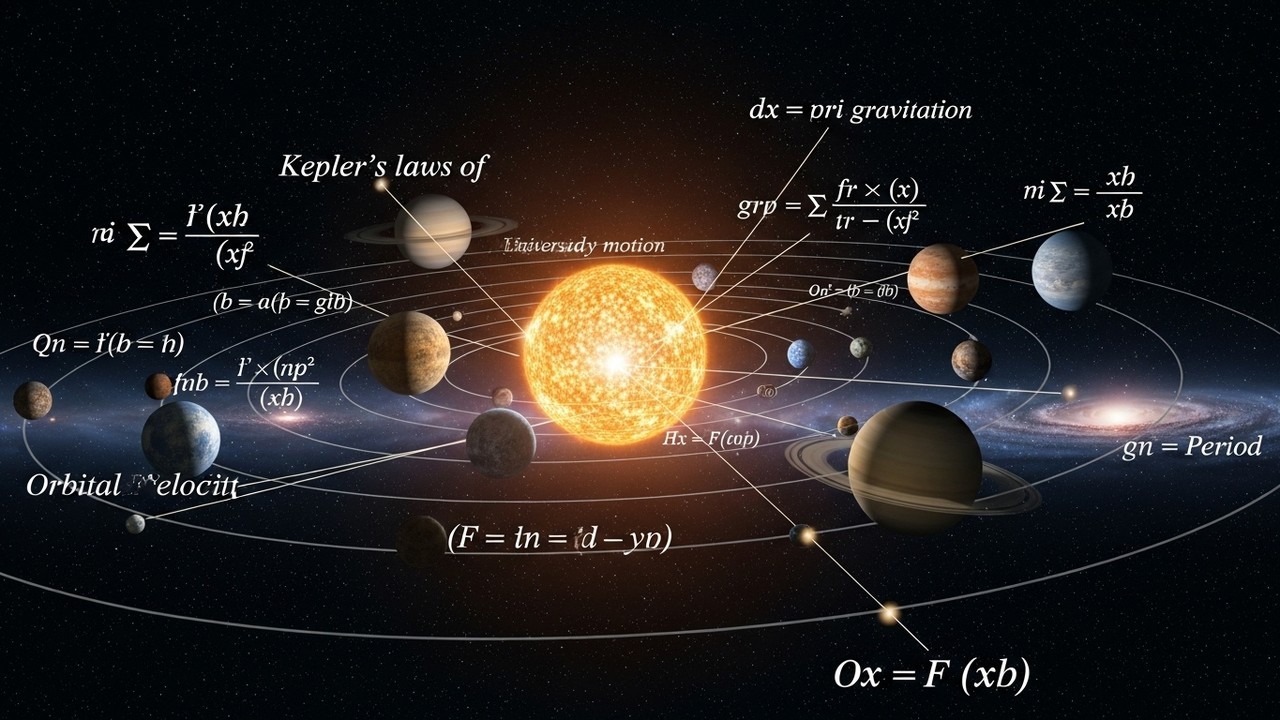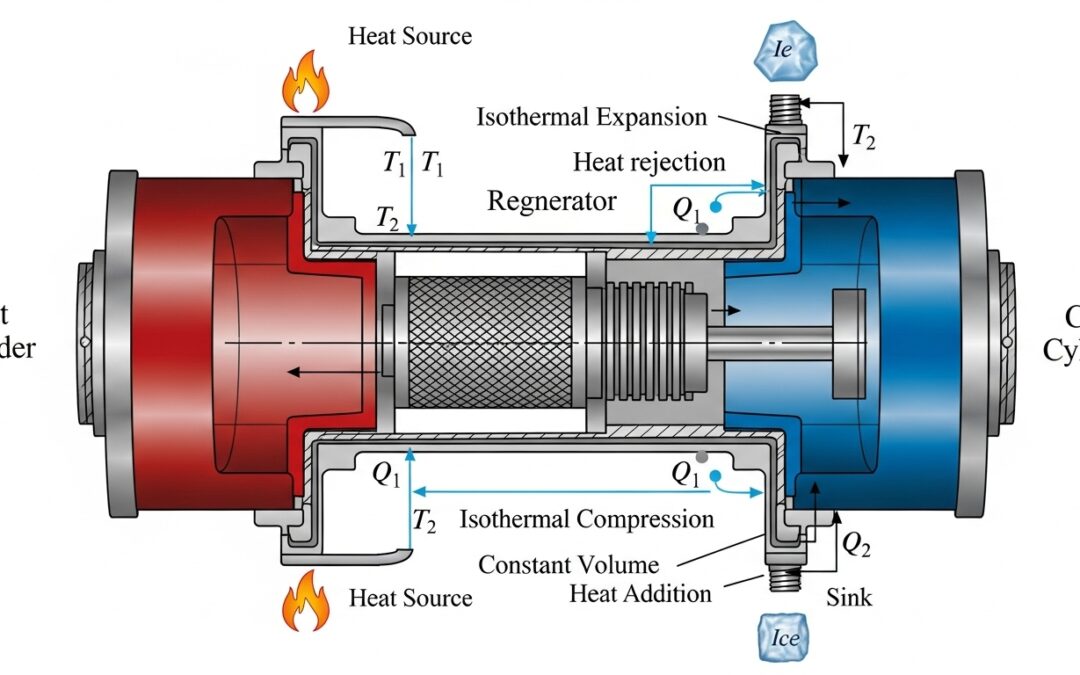IIT JEE gravitation is a cornerstone of physics, pivotal for understanding the cosmos and excelling in competitive exams. This article explores the fundamental principles, numerical problems, and practical applications of gravitation to prepare you for success. From Newton’s laws to escape velocity, we will unravel the intricacies of gravitational forces.
Table of Contents
Read More
The study of celestial bodies and their interactions has always been a captivating area of scientific exploration. From the earliest observations of planetary movements to the sophisticated calculations of modern astrophysics, understanding the forces that govern the cosmos has been a cornerstone of human knowledge. The concept of escape velocity, a critical parameter in this field, offers a unique perspective on the dynamics of gravitation and the behavior of objects in space. This article delves into the intricacies of IIT JEE gravitation, offering numerical solutions and insights to enhance your understanding of this fundamental concept.
Unveiling the Essence of Gravitation
The allure of the cosmos lies in its vastness and the elegant laws that govern it. At the heart of this cosmic ballet is the force of gravitation, a fundamental interaction that shapes the universe. Understanding this force is crucial for anyone preparing for exams like IIT JEE, which frequently tests students on their grasp of gravitational principles. Let us explore the basics of IIT JEE gravitation.
The Genesis of Gravitational Force
The genesis of the gravitational force is best understood through Newton’s law of universal gravitation. This law states that every particle in the universe attracts every other particle with a force directly proportional to the product of their masses and inversely proportional to the square of the distance between their centers. This seemingly simple relationship has profound implications, from the fall of an apple to the orbital paths of planets. The foundation of IIT JEE gravitation questions often lies in this basic principle.
This force, ##F = G \dfrac{{m_1 m_2}}{{r^2}}##, where ##G## is the gravitational constant, ##m_1## and ##m_2## are the masses of the two objects, and ##r## is the distance between them. The gravitational constant, ##G##, is approximately ##6.674 \times 10^{-11} N(m/kg)^2##. This value is essential for performing calculations in various numerical problems. This law is the cornerstone of understanding how objects interact gravitationally, forming the basis for many problems.
Newton’s law, however, does not explain the nature of gravity, merely describing its effects. Einstein’s theory of general relativity later revolutionized our understanding by describing gravity as a curvature of spacetime caused by mass and energy. This framework provides a more complete and accurate picture, particularly in extreme gravitational environments. The interplay between Newtonian and Einsteinian views enriches the study of IIT JEE gravitation.
Escape Velocity: Breaking Free
Escape Velocity — Concept, Formula, and Applications
Escape velocity is the minimum speed an object must have to completely overcome the gravitational pull of a celestial body without any further propulsion. This principle underpins satellite launches, interplanetary missions, and astrophysical studies of stars and planets. It directly depends on the celestial body’s mass and radius.
Derivation Using Energy Conservation
At the planet’s surface (radius ##R##, mass ##M##), an object of mass ##m## has:
- Kinetic energy: ### E_k = \tfrac{1}{2} m v_e^2. ###
- Gravitational potential energy: ### U = -\dfrac{GMm}{R}. ###
For the object to just escape, its total energy at infinity must be zero:
### \tfrac{1}{2} m v_e^2 – \dfrac{GMm}{R} = 0. ###
Solving for ##v_e##:
### v_e = \sqrt{\dfrac{2GM}{R}}. ###
Notice the mass of the escaping body cancels out — so escape velocity is independent of the object’s mass.
Key Points
- Only the planet’s mass ##M## and radius ##R## matter.
- No atmosphere assumed (otherwise air drag increases required launch speed).
- The formula ignores planetary rotation and relativistic effects.
Escape Velocity of Earth and Moon
| Celestial Body | Mass (kg) | Radius (m) | Escape Velocity (km/s) |
|---|---|---|---|
| Earth | ##5.97\times 10^{24}## | ##6.37\times 10^{6}## | ##11.2## |
| Moon | ##7.35\times 10^{22}## | ##1.74\times 10^{6}## | ##2.38## |
Example Problem
Problem: Calculate the escape velocity from Mars. Given: ##M = 6.42\times 10^{23}~\text{kg},\; R = 3.39\times 10^{6}~\text{m},\; G=6.67\times 10^{-11}##.
Solution:
### v_e = \sqrt{\dfrac{2GM}{R}} = \sqrt{\dfrac{2 (6.67\times 10^{-11})(6.42\times 10^{23})}{3.39\times 10^{6}}}. ###
Numerator: ##2 \cdot 6.67\times 10^{-11} \cdot 6.42\times 10^{23} \approx 8.56\times 10^{13}##.
Divide by ##3.39\times 10^{6} \approx 2.52\times 10^{7}##.
Square root: ##\sqrt{2.52\times 10^{7}} \approx 5.02\times 10^{3}~\text{m/s} = 5.02~\text{km/s}.##
Answer: Escape velocity on Mars ≈ 5.0 km/s.
Practice Problems
- Find the escape velocity of Jupiter (use ##M=1.90\times 10^{27}~\text{kg},\; R=7.15\times 10^{7}~\text{m}##).
- A planet has twice Earth’s radius and the same density. What is its escape velocity relative to Earth’s?
- Show that escape velocity is related to orbital velocity at the planet’s surface by: ### v_e = \sqrt{2}\,v_{\text{orb}}. ###
Takeaway
Escape velocity is a fundamental IIT JEE gravitation formula: ### v_e = \sqrt{\tfrac{2GM}{R}}. ### It explains why heavier planets with smaller radii have much higher escape speeds, directly affecting their ability to retain an atmosphere and influencing space mission design.
Imagine launching a rocket from Earth. To escape Earth’s gravity, the rocket must reach a certain speed, approximately ##11.2 km/s##. If the rocket’s velocity is less than this, it will eventually fall back to Earth. If the velocity is exactly equal to the escape velocity, the rocket will theoretically escape Earth’s gravity and travel infinitely far. Any velocity greater than the escape velocity will result in the object escaping and having some kinetic energy left.
The escape velocity is a crucial parameter for understanding the behavior of satellites, rockets, and other space-bound objects. It allows us to calculate the energy needed to launch objects into orbit and understand how celestial bodies interact. Understanding escape velocity is crucial to mastering IIT JEE gravitation. It is not just a theoretical value but a practical benchmark for space missions.
Tackling Numerical Problems: A Step-by-Step Guide
Numerical problems are an essential part of preparing for IIT JEE, providing a practical understanding of the concepts. Solving these problems enhances your analytical skills and reinforces your understanding of the underlying principles. Let’s explore some of the common problem types you might encounter in IIT JEE gravitation.
Calculating Escape Velocity
One of the most common types of problems involves calculating escape velocity. You’re given the mass and radius of a planet, and you need to calculate the minimum velocity an object must have to escape its gravitational pull. This often involves applying the formula ##v_e = \dfrac{{\text{2GM}}}{{\text{R}}}##. To solve these problems efficiently, you need to understand the variables involved and how they relate to the escape velocity.
For instance, consider a planet with a radius of ##6.4 \times 10^6 m## and a gravitational acceleration of ##10 m/s^2##. To calculate the escape velocity, we can use the formula ##v_e = \dfrac{{\text{2GM}}}{{\text{R}}}##. In this case, the escape velocity is approximately ##11.2 km/s##. These problems often test your ability to apply formulas and convert units, making it a practical application of the principles of gravitation.
The key to solving these problems is to break them down into smaller, manageable steps. First, identify the given values, such as the radius of the planet and the gravitational acceleration. Then, apply the appropriate formulas. Always double-check your units to ensure consistency. Finally, verify your answer to make sure it makes sense within the context of the problem.
Planetary Motion and Orbital Mechanics
Another common problem type involves planetary motion and orbital mechanics. These problems often involve calculating orbital velocities, periods, and the energy required to maintain an orbit. These questions test your understanding of Kepler’s laws of planetary motion and how they apply to real-world scenarios. Always remember that these problems are interconnected with each other.
Kepler’s laws describe the motion of planets around the sun. The first law states that planets move in elliptical orbits with the sun at one focus. The second law states that a line joining a planet and the sun sweeps out equal areas during equal intervals of time. The third law states that the square of the orbital period of a planet is directly proportional to the cube of the semi-major axis of its orbit. The application of these principles is essential.
These problems often involve applying these laws to calculate the orbital parameters of planets and satellites. You may need to use formulas to calculate the orbital period, the velocity of a satellite, or the energy required to change an orbit. Solving these problems enhances your understanding of the interplay between gravitational force, orbital mechanics, and energy conservation. This knowledge will be beneficial for IIT JEE gravitation.
Key Takeaways
Mastering the concepts of gravitation, escape velocity, and planetary motion is essential for success in IIT JEE. Through a deep understanding of the fundamental principles and the ability to solve numerical problems, you can enhance your preparation and approach the exam with confidence. Understanding these concepts opens doors to the fascinating world of astrophysics and space exploration.
| Concept | Formula | Application |
|---|---|---|
| Newton’s Law of Gravitation | ### F \;=\; G \dfrac{m_1 m_2}{r^2} ### | Calculating the gravitational force between two masses separated by distance ##r##. |
| Escape Velocity | ### v_e \;=\; \sqrt{\dfrac{2GM}{R}} ### | Finding the minimum velocity required for an object to leave a planet’s gravitational field without propulsion. |
| Orbital Velocity | ### v \;=\; \sqrt{\dfrac{GM}{r}} ### | Determining the speed needed for a stable circular orbit around a celestial body of mass ##M##. |
| Kepler’s Third Law | ### T^2 \;\propto\; a^3 ### | Relating the square of a planet’s orbital period ##T## to the cube of its semi-major axis ##a##. |
We also Published
RESOURCES
- IIT JEE advanced Physics -Gravitation – Study Materials
- GRAVITATION
- Is gravitation one of the most important chapters for JEE-Advanced …
- Gravitation | IITJEE Advanced Problem Series – YouTube
- Gravitational Classes (IIT/JEE/NEET Foundation) Your Success …
- Understanding Gravitation: Concepts, Principles and Application
- Gravitation Classes Pvt. Ltd. | Kanpur
- Gravitation -Study Material for IIT JEE | askIITians
- Gravitation | Physics | JEE Main Previous Year Questions …
- Gravitation JEE Main Previous Year Questions With Solutions





0 Comments